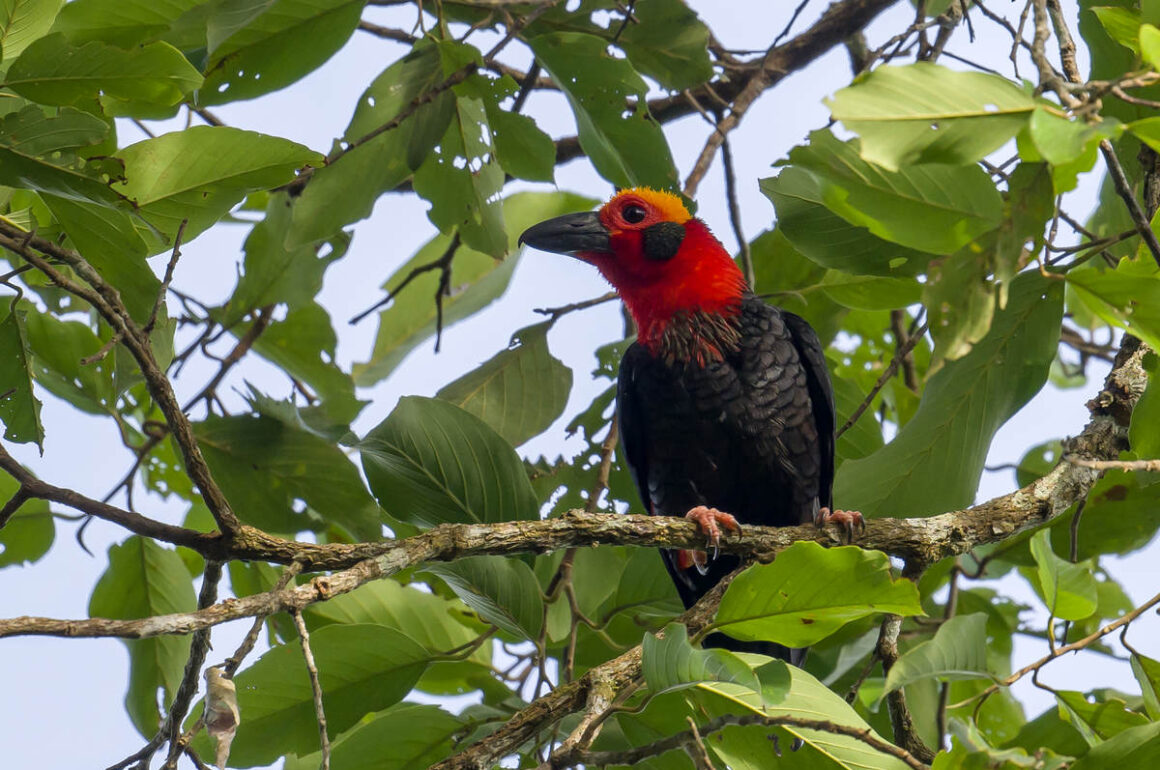
The Bornean Bristlehead is kind of the star bird of Sepilok. eBird calls it “a ‘grail bird’ of many birders visiting Borneo.
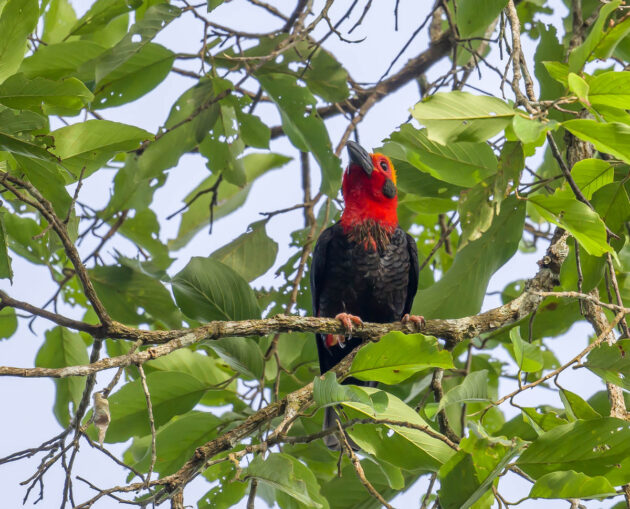
Ironically, while I was very keen on seeing it during my week at Sepilok, I thought I failed to do so only to realize later – going through my photos – that I had indeed seen it. If that sounds implausible to you, I fully agree. Particularly given that eBird calls the species “unique and unmistakable”. Well, I guess the typical eBirder is a better birder than me.
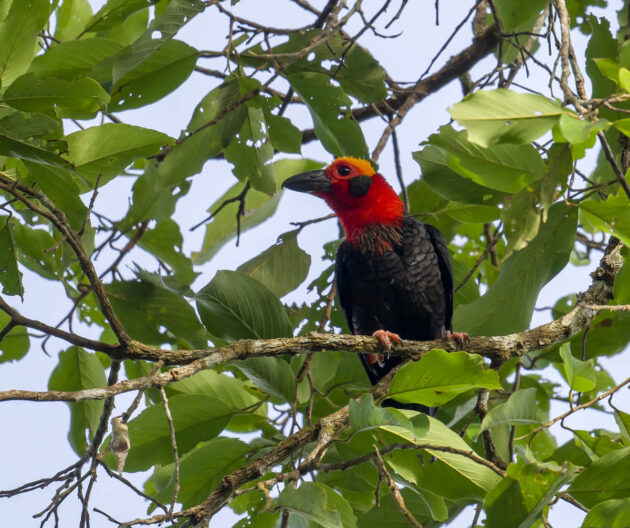
It is listed as Vulnerable or Near Threatened (the HBW charmingly gives both categories in its species portrait, thus assuring that one of the two almost certainly is correct).
Its scientific species name gymnocephala means naked-headed rather than bristle-headed, which is a bit disappointing as I was hoping to learn the Latin or Greek word for bristle. Maybe bristles were not invented yet in those antique times.
The Blue-eared Kingfisher looks like a premium version of the Common Kingfisher found in Europe – it is smaller and has deeper blue upperparts without turquoise blue tinge and blue ear-coverts (source).
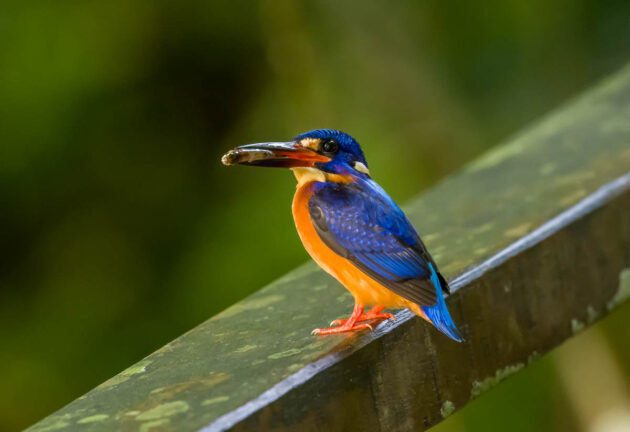
According to the HBW, the species “dives vertically into water and returns to perch with the catch, which is struck on perch before being swallowed head first”. So, possibly the fish on the photo is still alive.

Strangely, the illustration shown in the HBW entry for the Rufous-backed Kingfisher does not really match the photo below very well. Fortunately for me (but somewhat unfortunately for the HBW), this is not my ID mistake, as the photos in the HBW entry show. Up to now, I thought that the B in the HBW stands for bird, but I guess I was wrong.
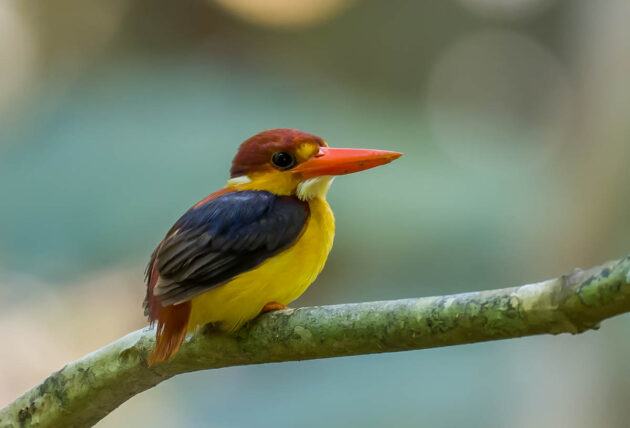
The somewhat more open areas near the Sepilok Rainforest reserve are a good location to see the wrecks of rusty cars as well as two munia species: Chestnut Munia …
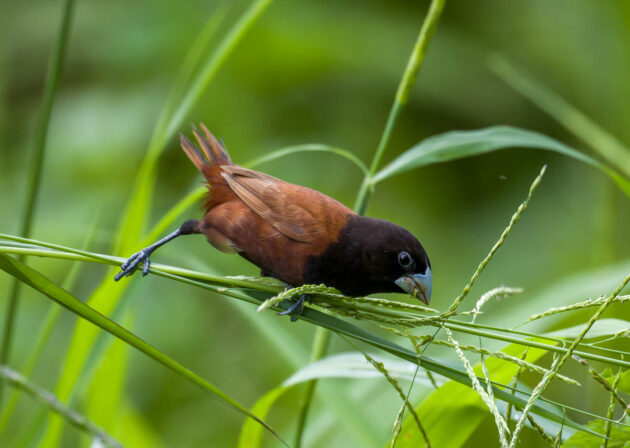
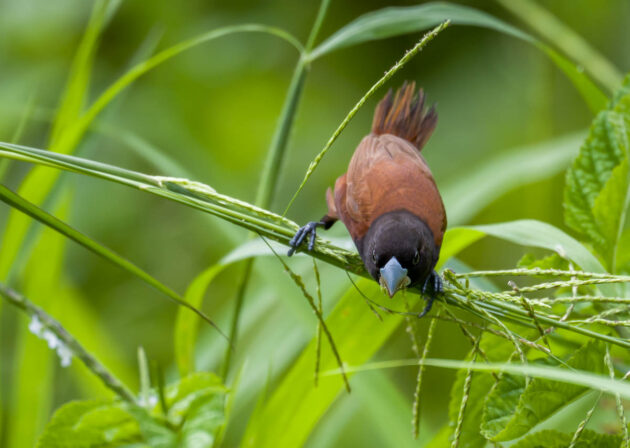
… and Scaly-breasted Munia
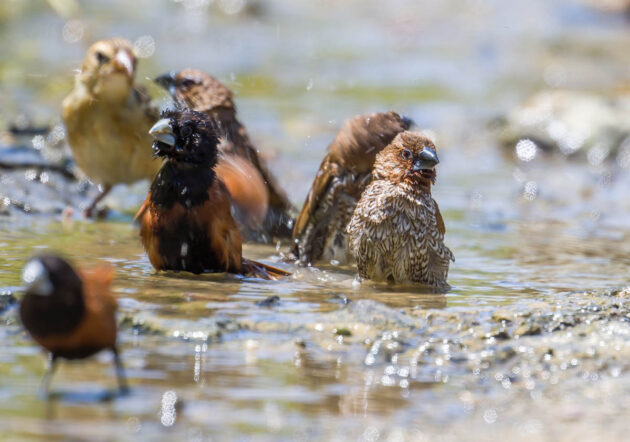
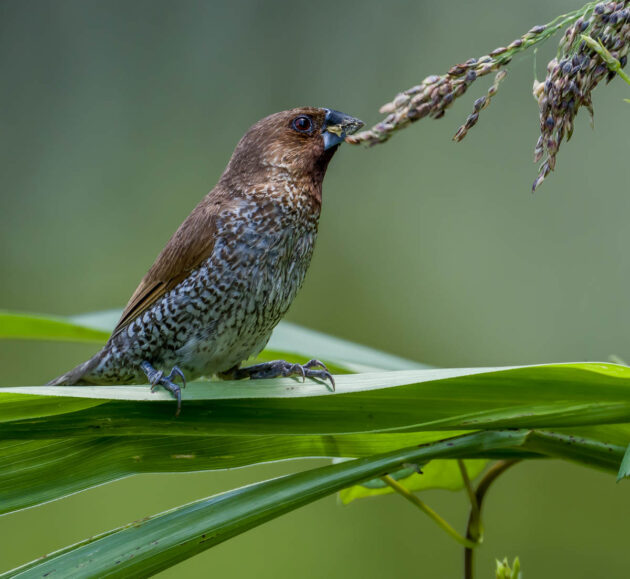
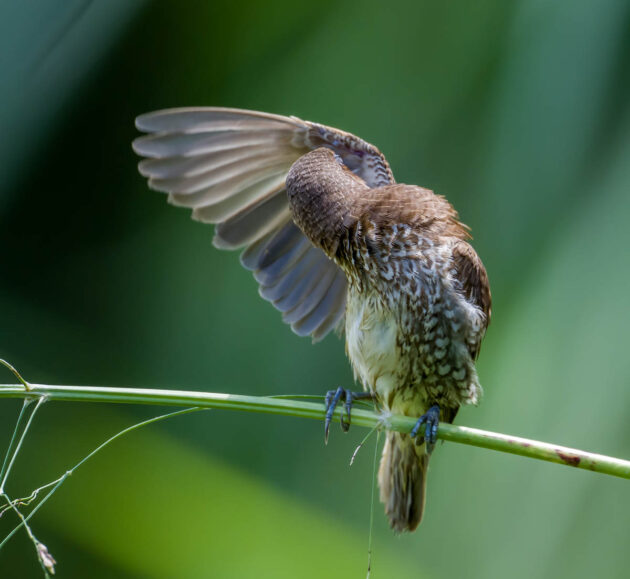
As I already mentioned the Sabah Partridge in a recent post, I do not have much to add here – though the photos I took at Sepilok are better and do not only show a sleeping bird. That is what progress is all about.
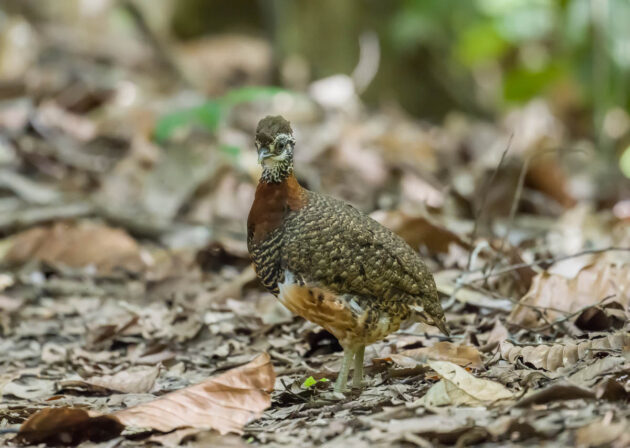
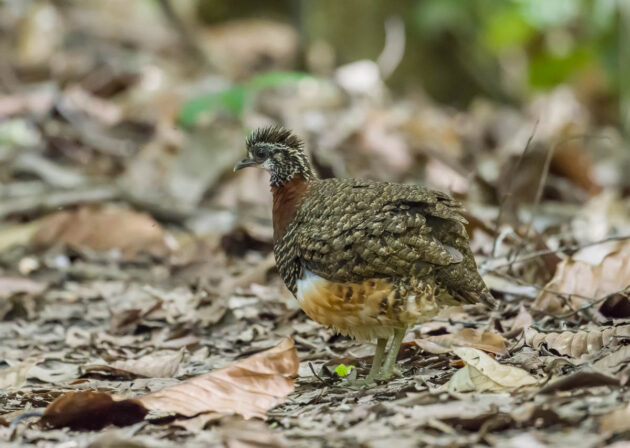
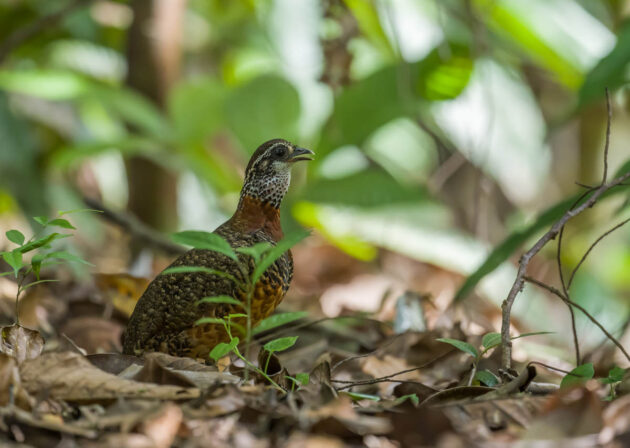
Scientifically speaking, the Dark-throated Oriole is the Yellow-backed Oriole (xanthonotus).
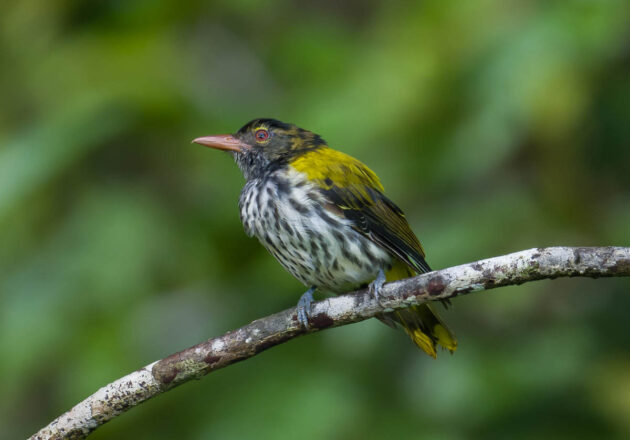
It is listed as Near Threatened. These two photos show a male – the female is mostly olive-colored rather than yellow. In fact, given that these photos were taken in Sabah, they presumably show the Ventriloquial Oriole (consobrinus), if this paper is correct. The two species differ in genetics and in song, apparently.
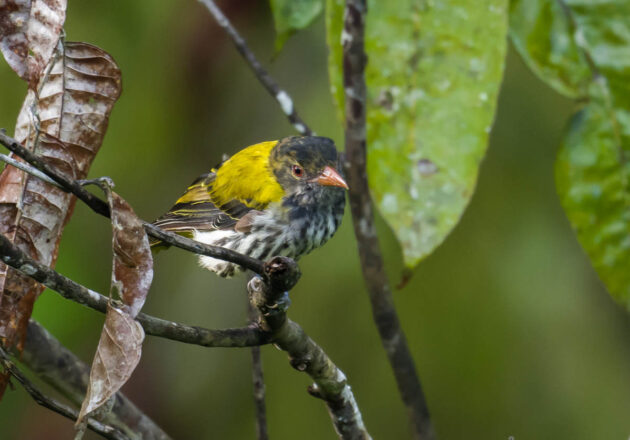
The Lesser Green Leafbird is also classified as Near Threatened. I find it quite fascinating how well it blends into the leaves.
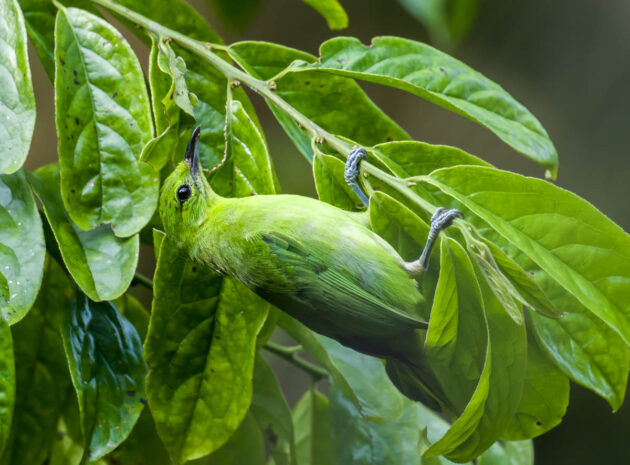
Its scientific species name cyanopogon does not refer to a dance style preferred by punks but rather to its dark blue beard (which only the male has, of course).
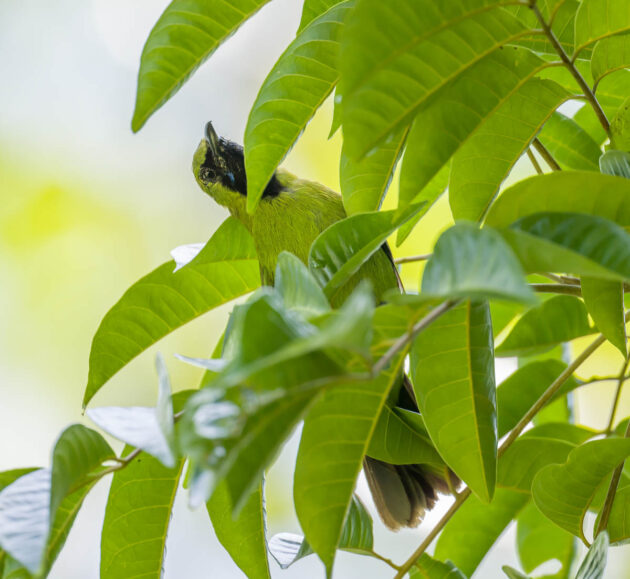
If you like to read about avian diseases, a paper on iron storage disease in a Lesser Green Leafbird could be a good choice for you.
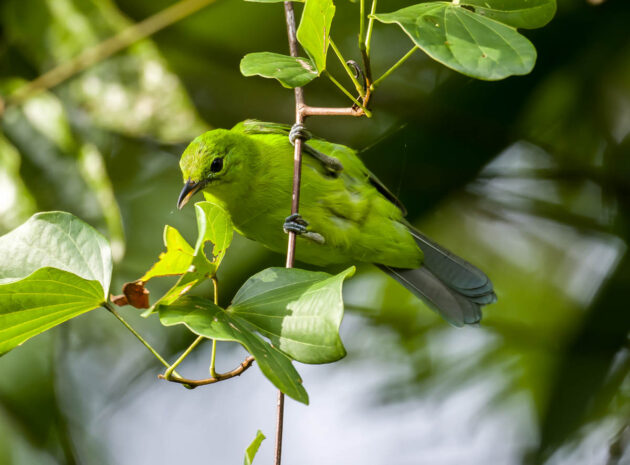
If like me you enjoy cute birds, you will like the Malaysian Pied Fantail.
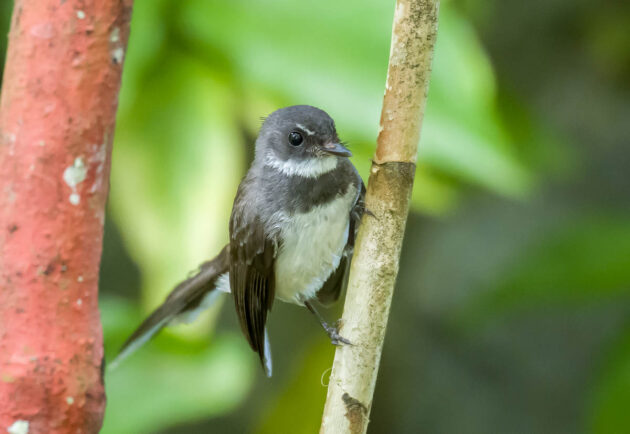
According to Wikipedia, it is locally referred to as murai gila, literally “crazy thrush” in the Malay language.
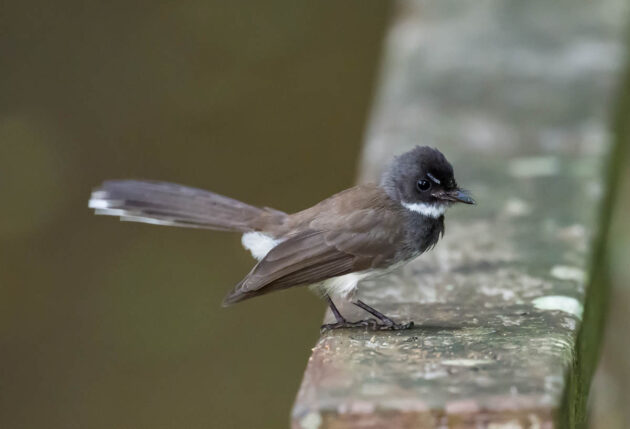
There are also several bulbul species at Sepilok. The name Hairy-backed Bulbul makes the species sound rather unappealing (somehow I associate hairy backs with ugly men in low-budget softporn movies), but it is actually a rather nice-looking bird …
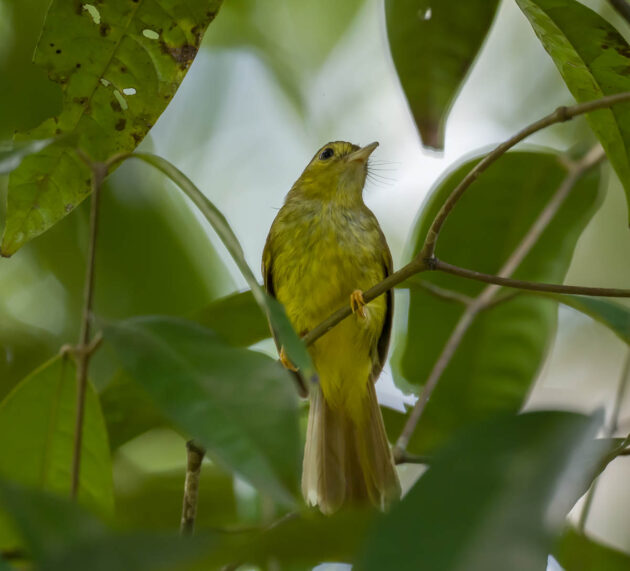
… with what eBird calls “surprised-looking large dark eyes”.
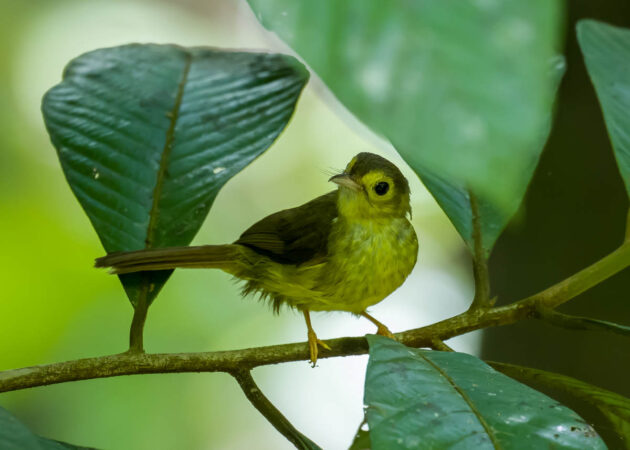
The English name may not immediately make sense judging from the photos but the HBW mentions “hair-like filoplumes (up to 50 mm long) extend[ing] from nape and mantle over back (rarely visible in field)”.
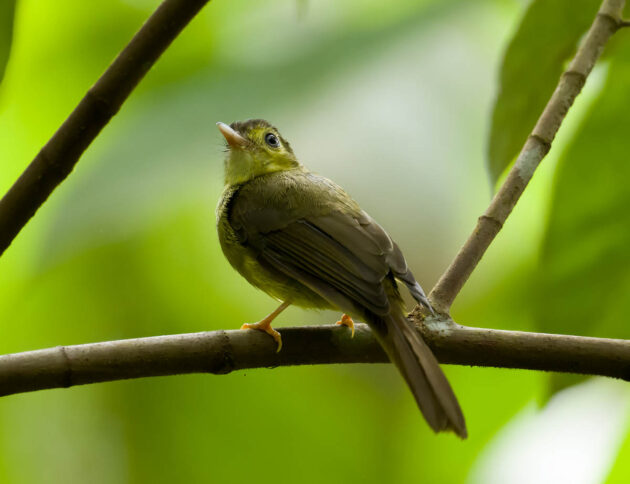
The name of the Asian Red-eyed Bulbul is much more obvious.
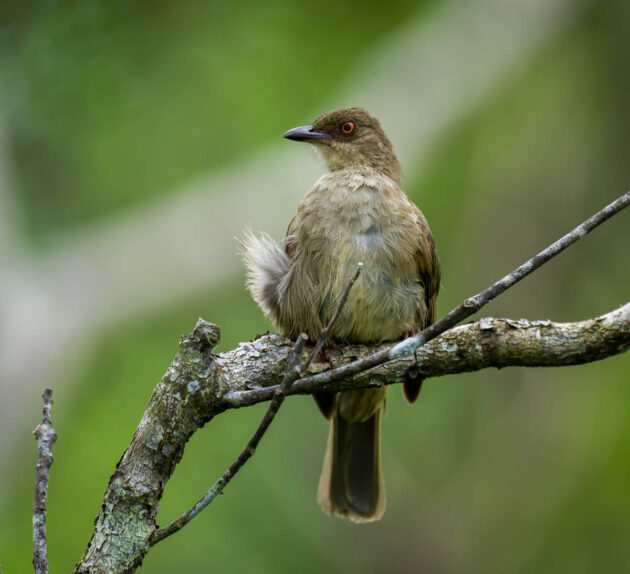
Though surprisingly, for the scientific species name brunneus (brown), a much less obvious feature was selected.
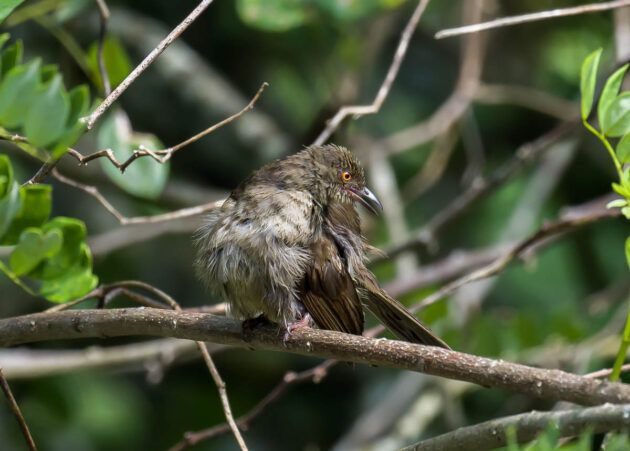
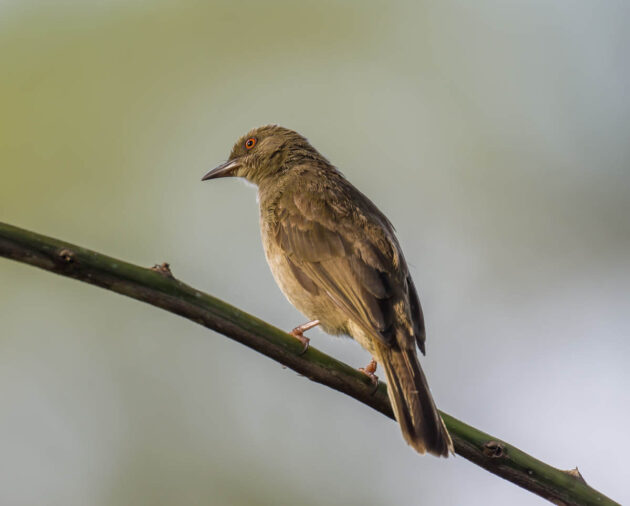
The information on the conservation status of the Grey-cheeked Bulbul in the HBW is particularly muddled, even by the HBWs low standards. Within the same paragraph, the species is described as Vulnerable, Near Threatened and Least Concern – possibly as the entry is apparently the result of lumping several bulbul species.
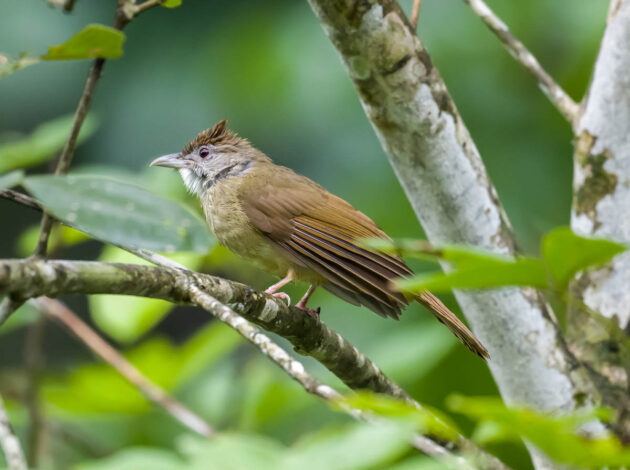
Like several of the bulbul species mentioned above, the HBW calls the Olive-winged Bubul “unassuming”.
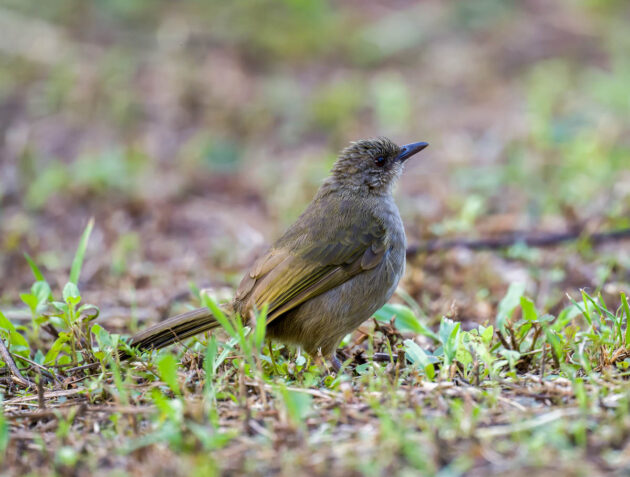
The scientific name plumosus (“feathered”) clearly separates this bulbul species from all the unfeathered birds.
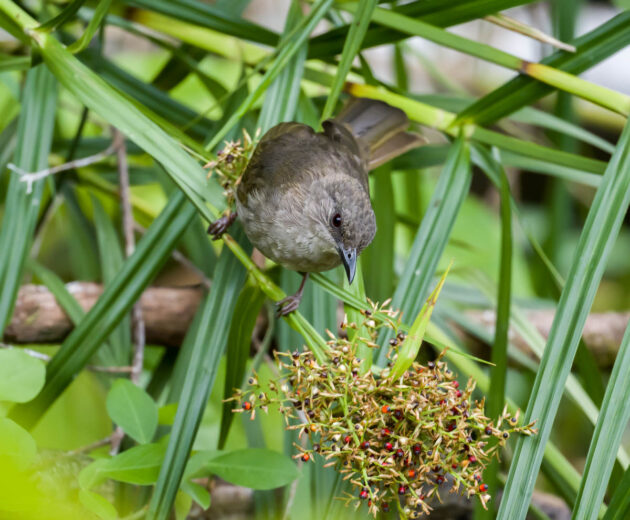
Verditer Flycatchers apparently like to nest in human houses as they provide good nesting sites – in contrast, Daurian Redstarts pick human houses because the presence of humans lowers the predation risk (source).
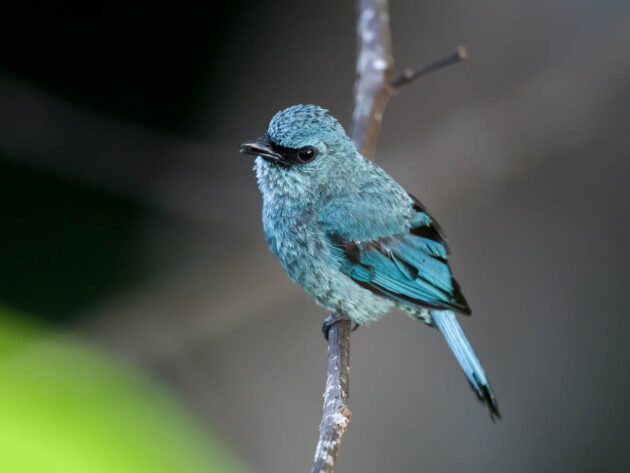
And in what seems to me to be a rather far-out paper, some Chinese researchers have developed a camouflaged short-range communication method based on the imitation of Verditer Flycatcher songs. I am not making this up.
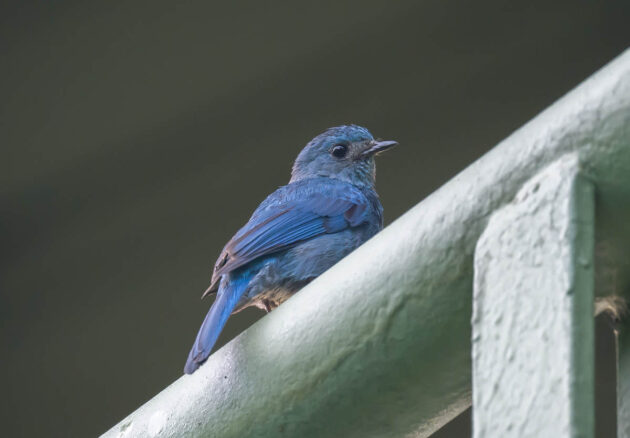
Wallace’s Hawk-eagle conveniently nests in a tree close to one of the observation towers at Sepilok, allowing for good photos of the single chick.
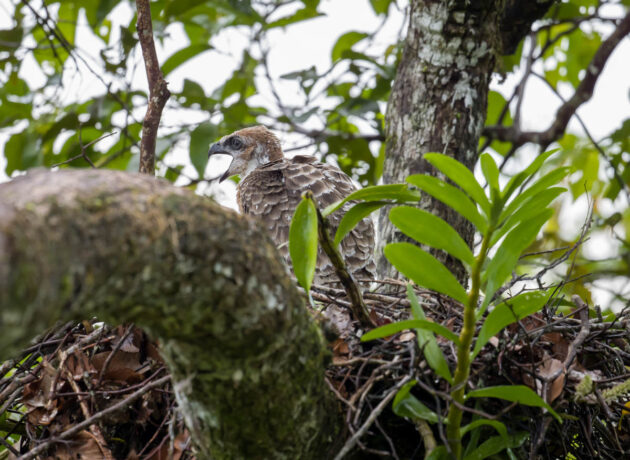
The species is classified as Vulnerable, with an estimated population of 2500–9999 mature individuals.
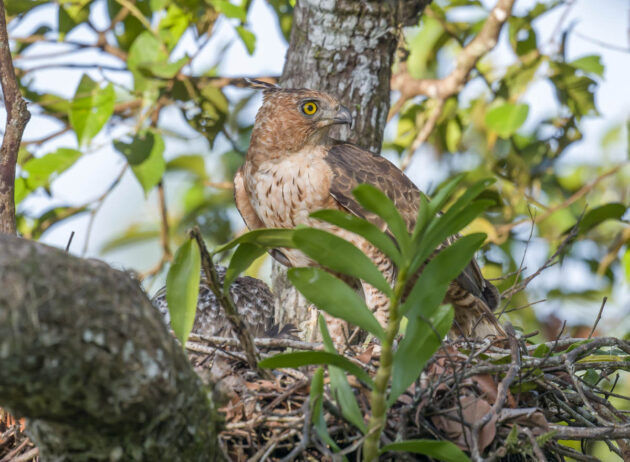
Apparently, the trade in birds has partly shifted online from brick-and-mortar marketplaces – a paper lists one Wallace’s Hawk-eagle available online. Progress this is not.
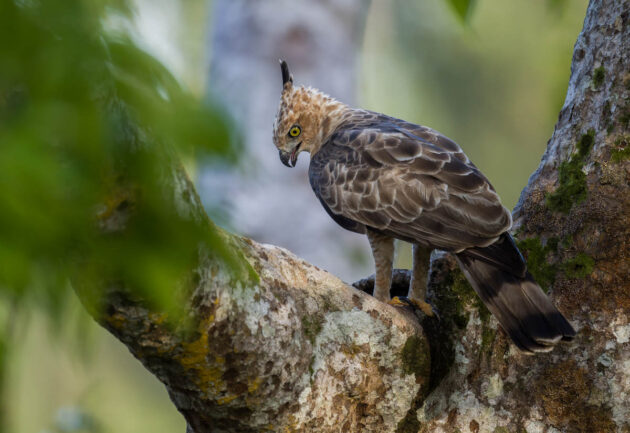
In the time-honored and resource-saving tradition of doing bird surveys at the most typical of habitats – university campuses – there is a paper on the species in a forest around Kota Kinabalu University. It includes observations of Wallace’s Hawk-eagle.
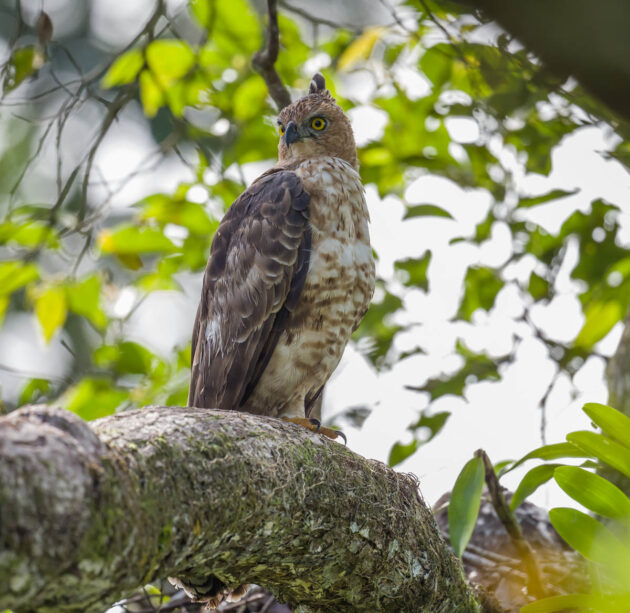
There is a long Wikipedia article on Alfred Russell Wallace, the namesake of this species – it seems that apart from coming up with the concept of evolution independent of Charles Darwin, he also had interesting thoughts on a wide range of other topics. For example, he wrote a paper advocating a pure paper money system, not backed by silver or gold, which impressed the economist Irving Fisher so much that he dedicated his 1920 book “Stabilizing the Dollar” to Wallace.
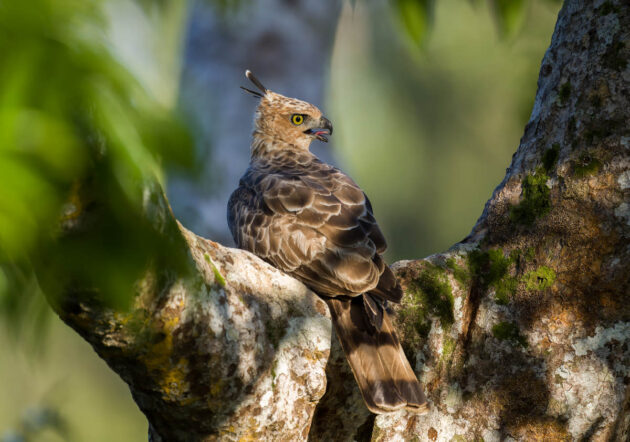
However, this did not keep him from losing serious money in a series of bad investments in railways and mines.
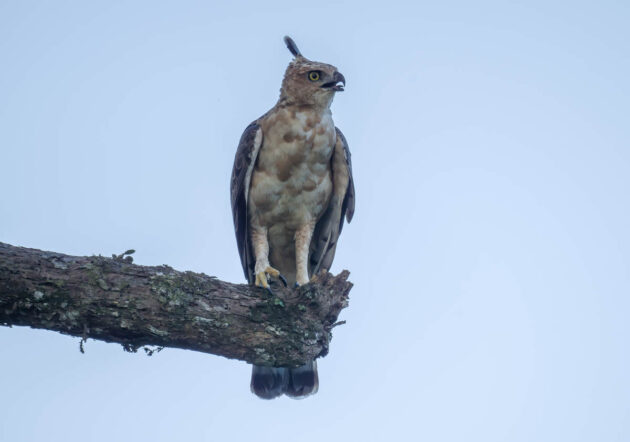
Apparently, some young birders at Sepilok call the Chestnut-breasted Malkoha the superhero bird. The face mask, I guess. I often feel that the creativity of children is vastly overrated.
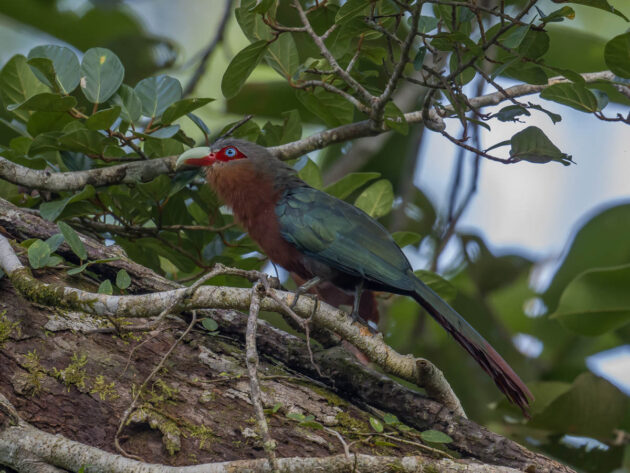
A local Sandakan birder and expert bird photographer, YC Lee, has taken a fantastic video of the bird.
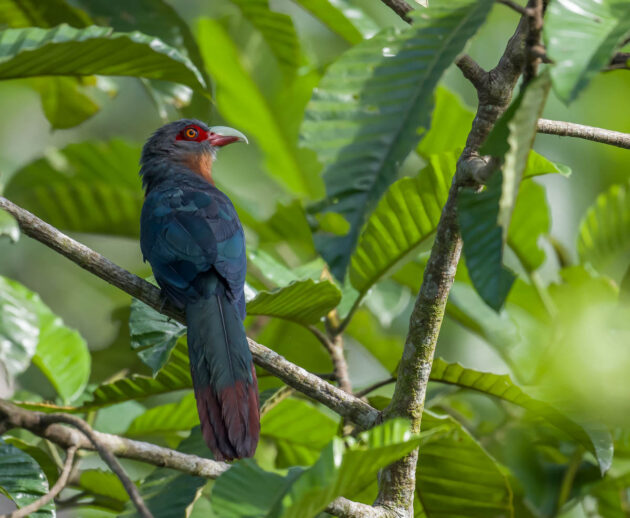
The scientific species name curvirostris (“curved-billed”) is a bit strange given the striking colors of the bird, which seem much more worth highlighting.
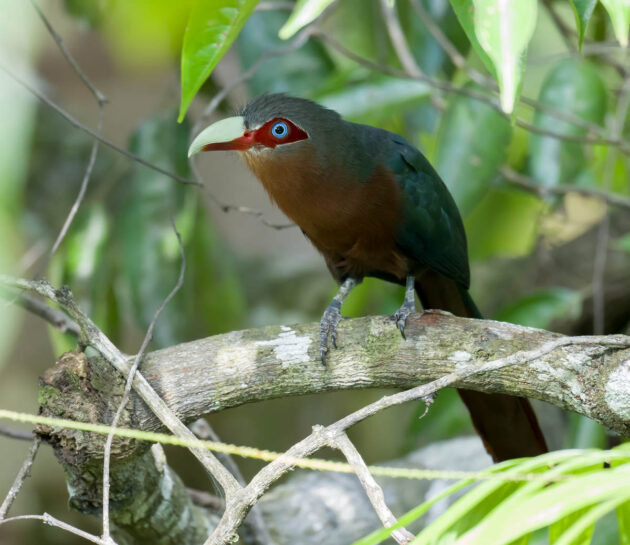
While the HBW generally does not seem to be too interested in birds, they seem to have taken a shine to the Chestnut-breasted Malkoha, speaking of the “rather clown-like appearance that is wholly distinctive” and adding that “the species is pleasingly quite common”.
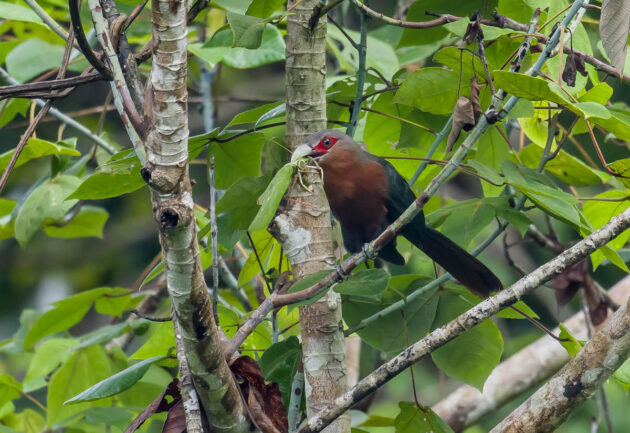
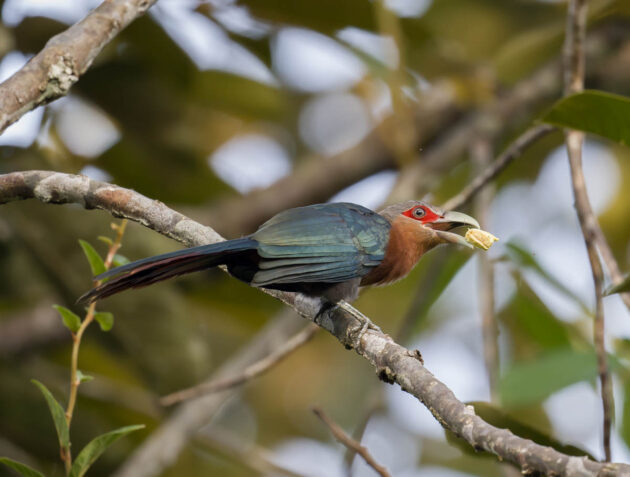
It mainly feeds on insects, as there are no convenience stores in its forest habitat.
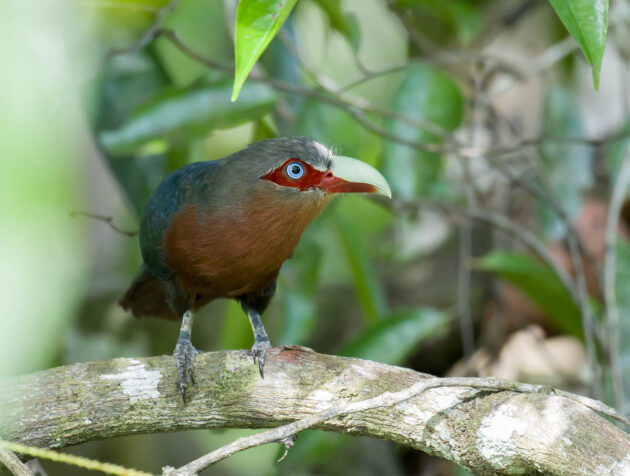
Like the other malkohas, it is not a brood parasite despite being a cuckoo.
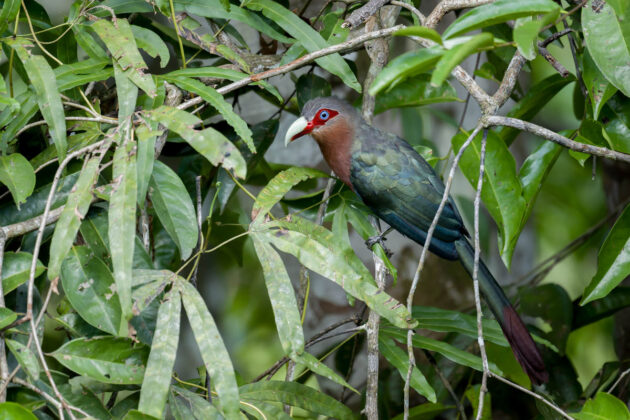
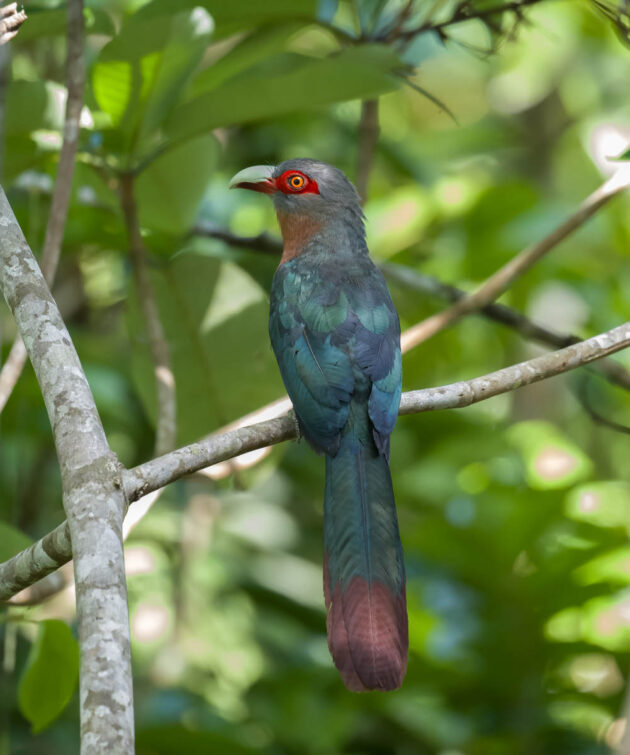
Given the exaggerated role of Sir Stamford Raffles in the establishment and success of Singapore – and the parallel underestimated role of William Farquhar – Raffles’s Malkoha might better be called Farquhar’s Malkoha – though this assumes that merits for good deeds are attributed to those who do them, not their superiors. Everyone who has ever worked in a company knows that this is not the case.
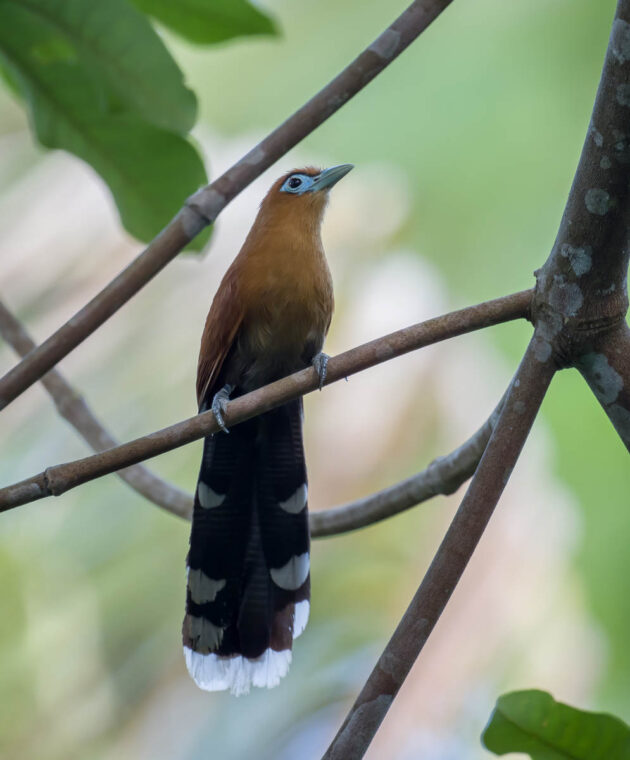
It is the only malkoha species with marked sexual dimorphism (i.e., if the birds were to use toilets assigned to different sexes, the two signs on the two doors would look different).
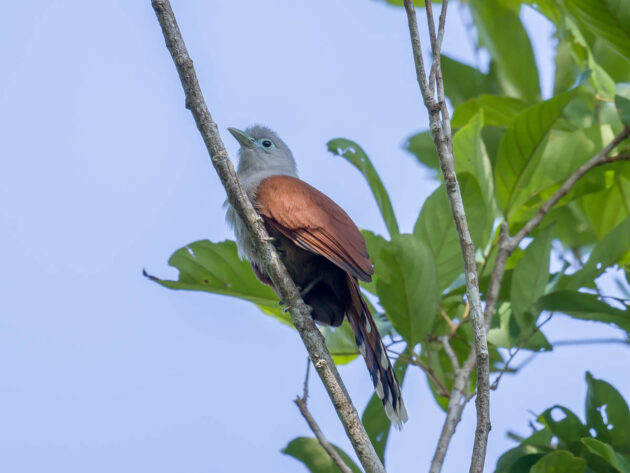
That means it is necessary to show at least two photos – the female …
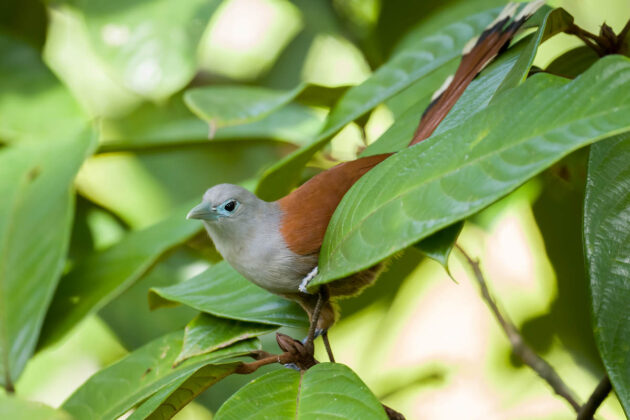
… and the male.
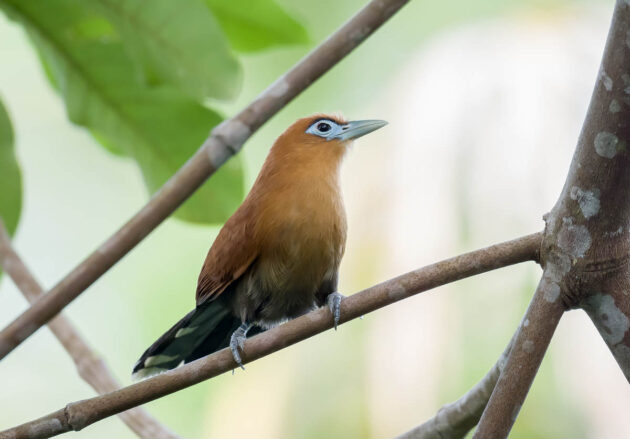
In the “Other” section ending this post, we have some animals that have the advantage of not being mammals. Always an advantage given how easily mammals are associated with Donald Trump.
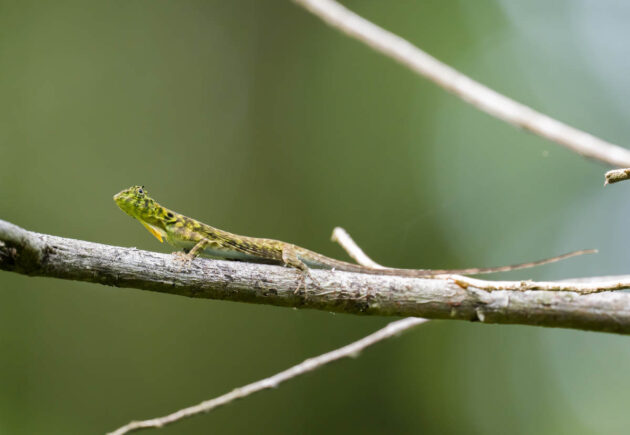
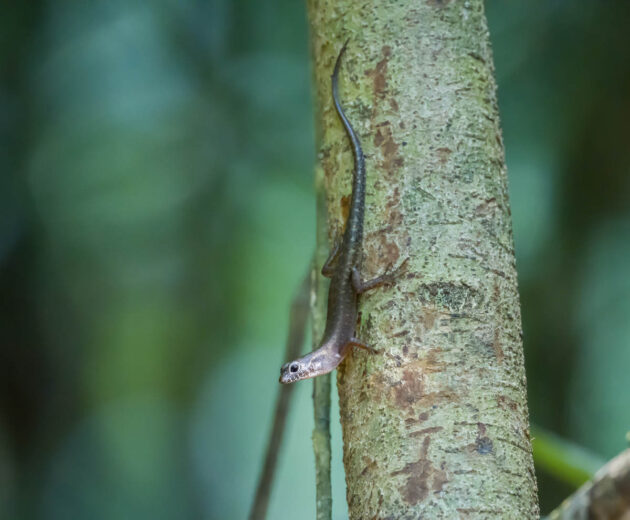
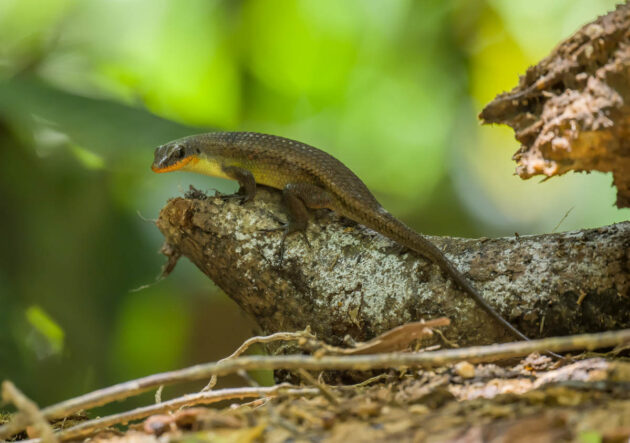
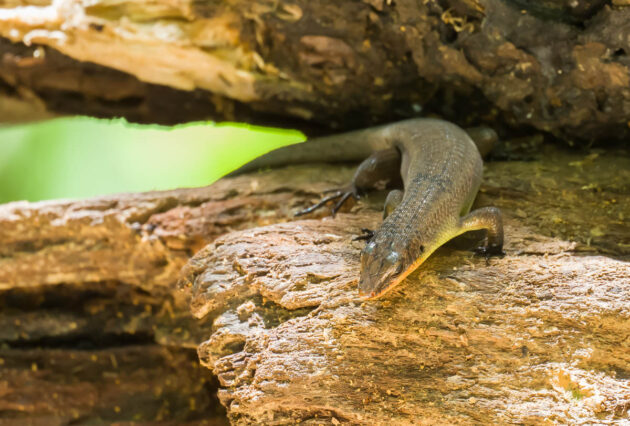
It is interesting to notice that some animals – such as this earthworm being eaten by a snake not much bigger than itself – struggle far less when facing death than Mr. Trump struggles with admitting he has lost an election.
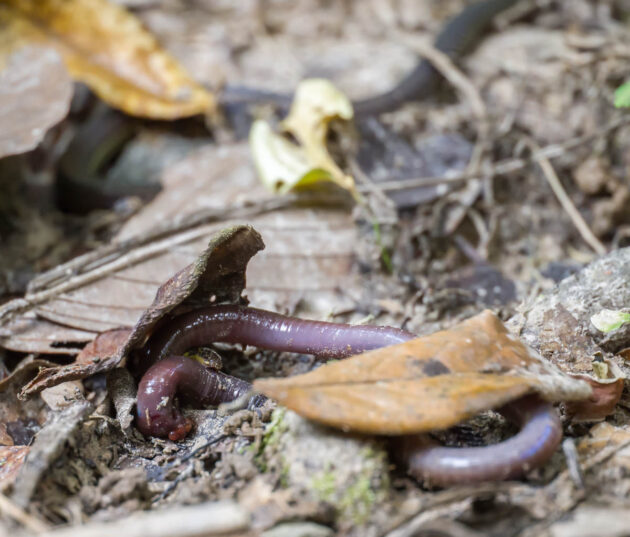
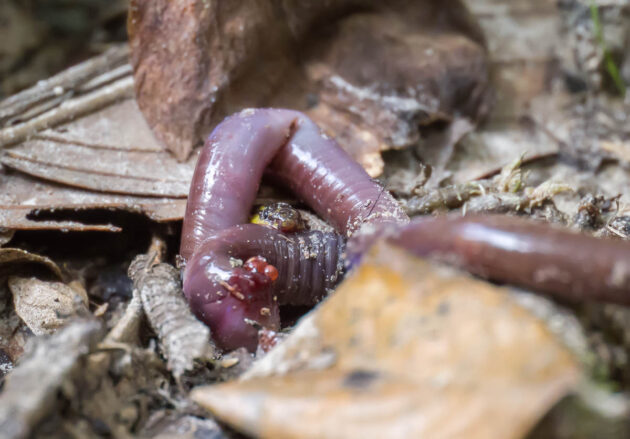
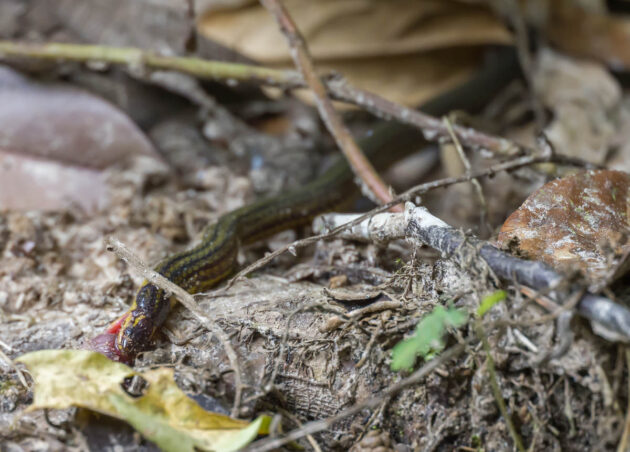













The direction of the fish’s head in a kingfisher’s bill is indicative of the species breeding near-by: head towards the throat means it is meant to be eaten by the bird itself. Head towards the tip of the bill means the bird will feed it to its young. So, I would assume your kingfisher had a nest with hungry mouths to feed.
Classy photos as always.
I’ll never forget my first and only bristlehead observation in South Kalimantan: before dawn a flock of large tail-less black birds with funky crow-like calls flying across my path. I can’t say that I would not have liked a better view another time, but this was so cool that it is nevertheless a good memory and I am not complaining.
Sometimes the Universe just isn’t fair: Talented photographer visits famous forest and accidentally gets a photo of a BB that is 50X better than the one I struggled to obtain… 😉
Michael, nobody ever said life is fair, I am afraid …
And I went to Borneo and didn’t get so much as a glimpse of a Bristlehead…